Crossing Lake O: Friends make epic paddleboard excursion on Florida's largest lake
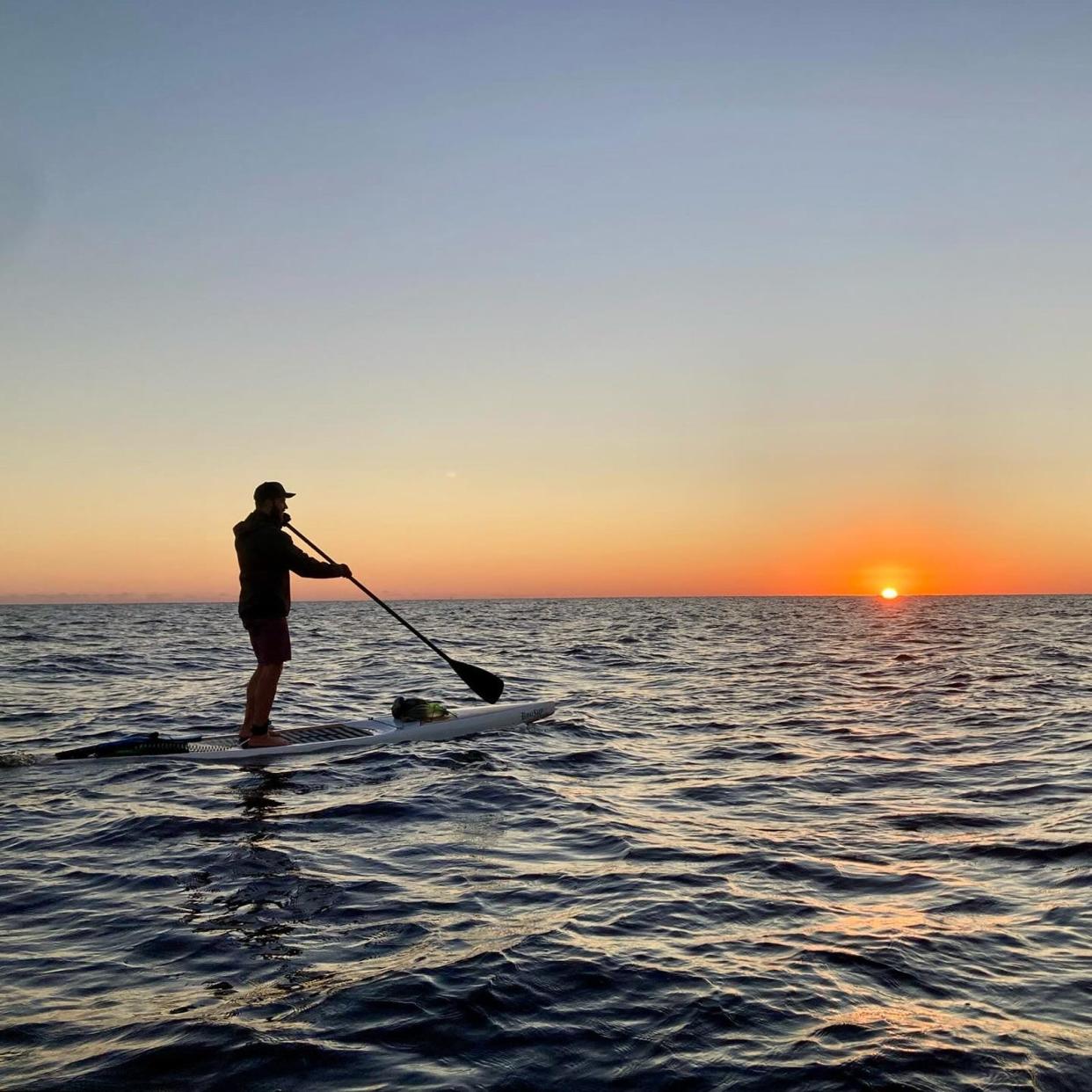
About 20 minutes into a planned half-day expedition, Mason Gravley had an encounter that might have persuaded others to abandon the idea.
Gravley and his friend, Jordon Wolfram, had just begun traversing Florida’s largest lake on stand-up paddleboards when a creature leapt from the water in the pre-dawn darkness and thumped into Gravley’s chest.
“Now I'm freaking out,” Gravley recalled. “I almost get knocked off the board because the wind's going, the waves are crashing, and I can't see anything. It's disorienting.”
Amid the shock and confusion, Gravley thought he had somehow been attacked by an alligator, one of an estimated 30,000 inhabiting Lake Okeechobee. He sensed the creature thrashing around on the top of his paddleboard.
It turned out to be merely a 2-foot-long Florida gar, a fanged, prehistoric fish with rough scales forming a kind of armor.
That apparent bad omen could have been enough to discourage Gravley and Wolfram from continuing their quest to paddle across the 730-square-mile lake. But the friends ventured on, and aside from another visit 10 minutes later from a leaping bluegill, they experienced no other unexpected animal encounters — and glimpsed only four alligators.
Gravley, a Frostproof native now living in Manatee County, and Wolfram, a Lakeland resident, believe they are the first to cross the largest lake in the Southeast on stand-up paddleboards. They accomplished the feat on the final day of 2023, taking 11 hours and 27 minutes to cover about 34 miles of water.
As inveterate adventurers, Gravley and Wolfram envisioned the trek as a continuation of their previous excursions on bicycles and in kayaks and canoes. But they were motivated by more than just the desire to prove they could do it.
Gravley and Wolfram navigated a southward course from the entry of the Kissimmee River into Lake Okeechobee, representing the path that water naturally took in its flow down the peninsula before human engineering projects diverted much of the flow east and west out of the lake, through the channelized Caloosahatchee and St. Lucie rivers.
In making their trek, they also honored the concept of the Florida Wildlife Corridor, a ribbon of contiguous, undeveloped land covering some 18 million acres from the Everglades, on the southern shore of Lake Okeechobee, to Florida’s northern border. Conservation groups had embraced the corridor concept in recent years, and Florida’s elected leaders have responded by devoting significant funds to its protection.
“That’s what's so darn striking is how powerful humans are at changing nature,” Gravley said, reflecting on the alterations of Lake Okeechobee and the Everglades. “It’s an amazing ability at times, but it's also, we do a lot of bad with it. But my goal was to bring awareness to just how much good is being done for wild Florida, I think we hear a lot about the negative, human nature is to focus on the negative.”
Noting the efforts of conservation organizations and many Floridians, Gravley said he finds reason for optimism.
“When people feel hope, they'll take action,” Gravley said. “When they don't feel like there's hope, they won't take action in any way. What's the point? So our goal was to, one, do something really fun, and two, make sure people know that there's hope and that whatever they can do, they should do it.”
Committed to exploring
Gravley works remotely as a marketer for Athletic Brewing Company, a Connecticut-based outfit specializing in non-alcoholic beer. He began hosting a podcast for the company and has since created two other shows, the Adventure Sports Podcast and the newer Florida Uncut, which honors people and organizations working to protect wild Florida.
Wolfram, who has appeared on the Adventure Sports Podcast, is a data analyst. Both are married, with Wolfram the father of three children and Gravley a dad to two with a third on the way.
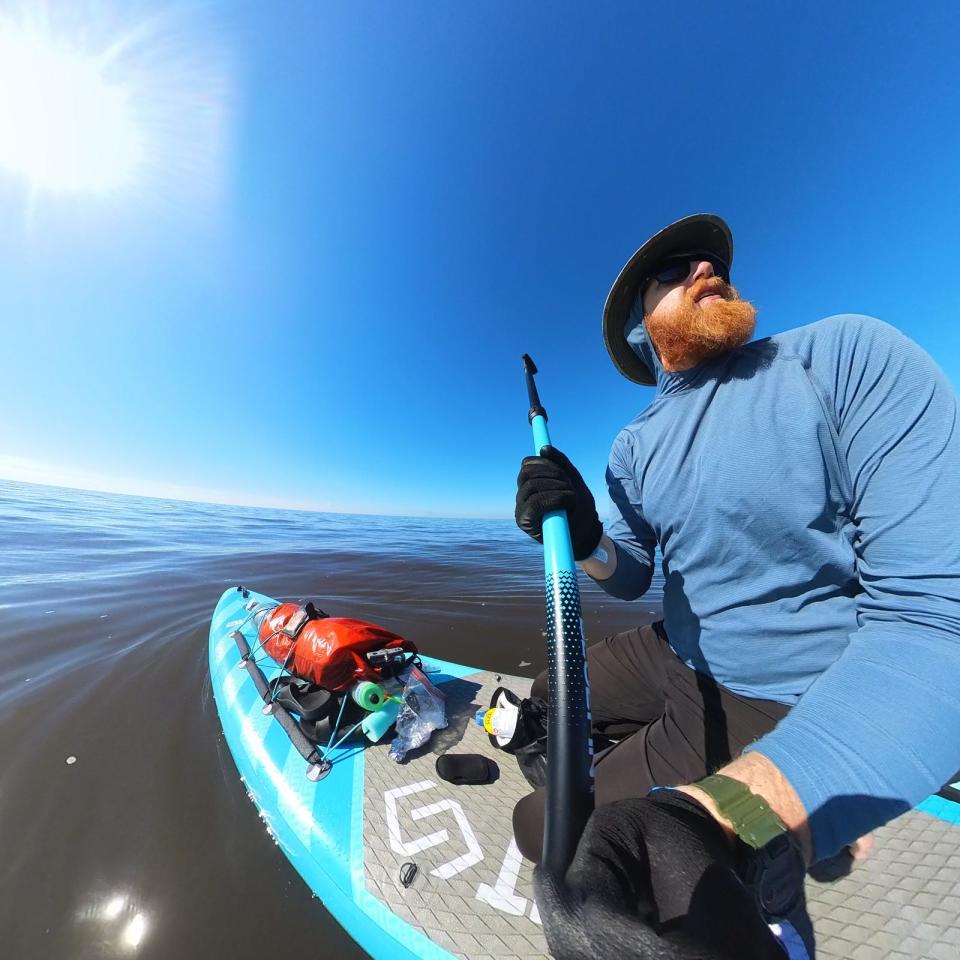
The pair met as fellow students at Southeastern University in Lakeland. Following their graduations in 2012 and 2013, respectively, they each lived in various places away from Florida and developed an affinity for endurance adventures.
Gravley once tackled a five-month cycling trip in which he toured 30 national parks, and Wolfram joined him for a three-week segment from Rocky Mountain National Park in Colorado to Zion National Park in Utah.
Both men returned to Florida about three years ago, and they made a pledge to organize outdoor expeditions every eight weeks, such as canoeing or kayaking on a river and camping overnight. The gatherings grew to 30 or 40 people, as the organizers dubbed themselves the Swamp Drifters.
“We're always inviting people with the goal to expose individuals — we both found, myself especially, just time outdoors was important to the roundedness of life, right?” Wolfram said. “You could spend too much time working, you could spend too much time in just about anything, and so time outdoors mattered. We wanted to share that with more people.”
'Keep some of Florida like it is': Lakeland broker pursues passion with conservation deals
They have paddled — in kayaks and canoes and atop stand-up paddleboards — on such waters as the Ocklawaha, Peace and Withlacoochee rivers, all of which originate in the Green Swamp, which covers northern Polk County. Seeking a more ambitious undertaking, Gravley and Wolfram decided about a year ago to cross Lake George, Florida’s second-largest lake, on paddleboards.
The day they chose proved to be inhospitable for the bearded buddies.
“It was a rough day — I mean, terrifying,” Gravley said. “And that lake’s only one-tenth of the size of Okeechobee. So we learned a valuable lesson there: Pick a day where it's calm, completely sunny, no chance of any sort of storm and preferably no wind or a little wind at your back, but not too much. Because even that would be challenging, just too many waves coming behind.”
'We're both very durable'
Toward the middle of last year, Gravley proposed paddling across Lake Okeechobee, and Wolfram did not say no, though he admitted that he finds open water much more intimidating than rivers for paddling.
“This is one we definitely didn't offer to the group,” Wolfram said. “We got a number of people who asked to do it, but the difference is myself and Mason have done enough long-distance events together to know how we respond and that we're both very durable. We're not necessarily the most amazing or fit athletes, but we're durable and we can keep a good attitude when conditions get really bad.
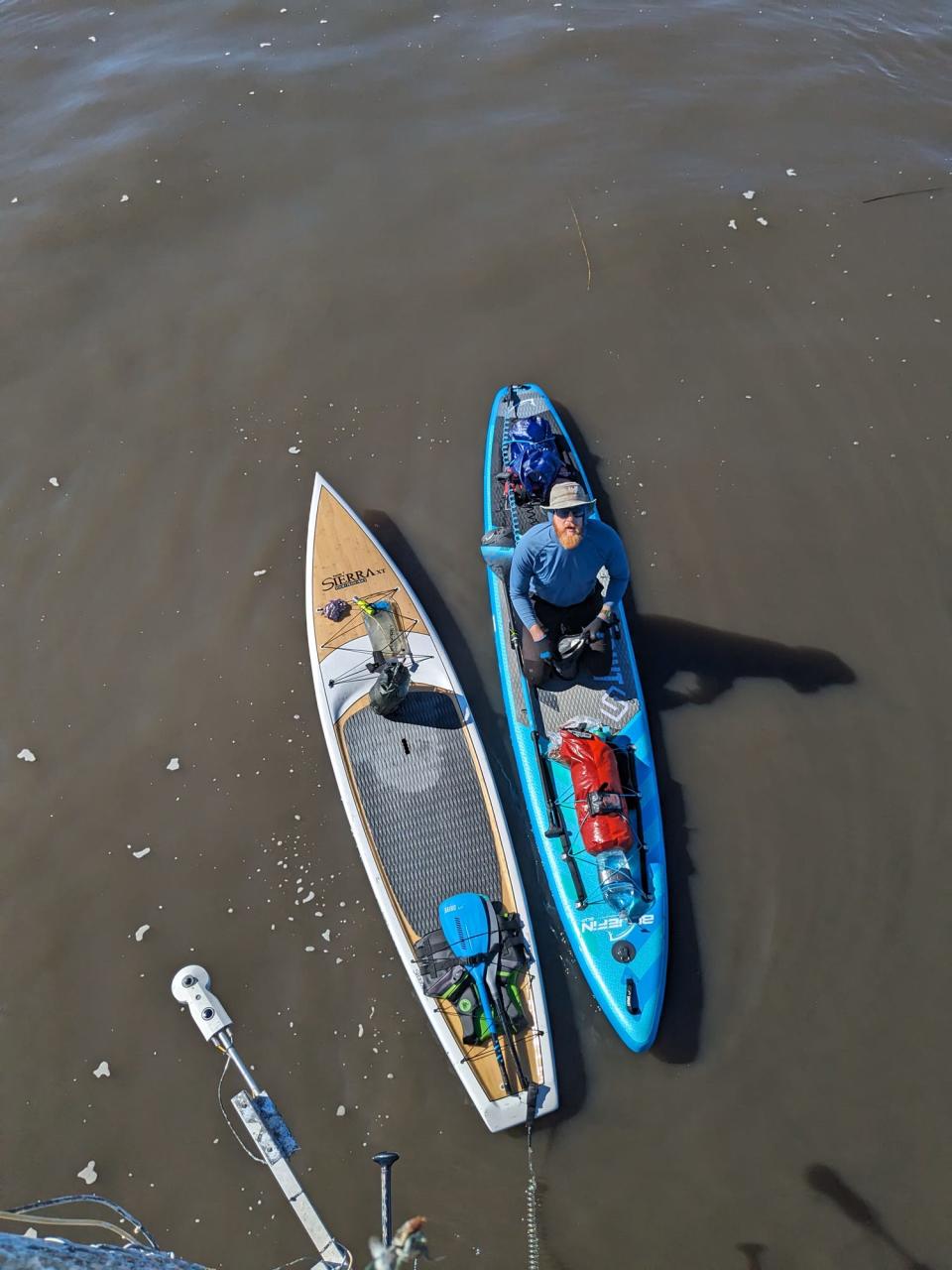
“And I think that was the most important aspect of this was I trusted Mason. I know him well, and I trust him. He knows me well. And so there was confidence that we could do it together.”
The pair set a goal of making the Lake Okeechobee excursion by the end of the year, but as they reached December it seemed they would be thwarted by unfavorable weather.
“And then, about a week out from the end of the year, I looked at the weather (forecast) and I said, ‘You know what, the last day of the year is going to be perfect. Let's do it,’” Gravley said. “And so, that's literally our last chance to fit it in the year, and so we did it.”
Another friend, Paul Austin, planned to join them but had to cancel the day before.
Stand-up paddleboards are flat, buoyant platforms, similar to surfboards, that users propel with a single-bladed paddle. Wolfram described them as “basically impossible to sink.”
Starting in darkness
The friends began their trek just north of Lake Okeechobee, at the point where the Kissimmee River flows into the lake. That river originates in Osceola County, flowing through Lake Kissimmee on the Polk County border and meandering south (with some sections artificially straightened) en route to Lake Okeechobee and the Everglades.
“The Kissimmee River is the primary source of the lake, and the reason we wanted to start there and go south to what's going to be the main outlet is that we wanted to follow the path that water would have naturally taken, which is coming from the Kissimmee River and then out through the Everglades along the southern marsh,” Gravley said.
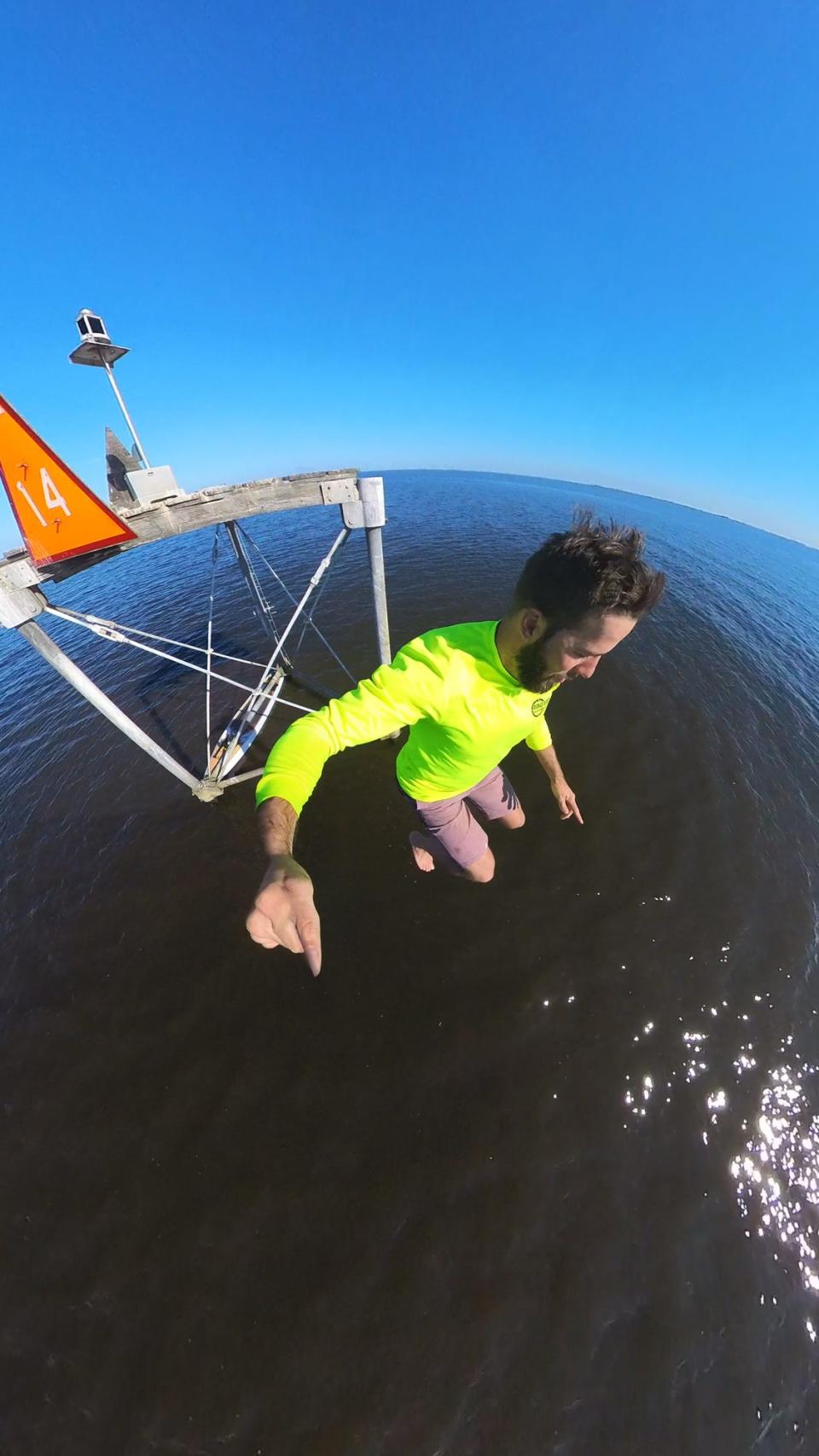
He alluded to the Lake Okeechobee Watershed Restoration Project, a long-range, federal-state endeavor intended to increase water flow through the south end of the lake, among other effects.
Gravley said he and Wolfram “wanted to kind of, almost act like little water droplets going straight south to the bottom of the lake, right to the mouth of the Miami Canal, which will feed the Everglades here soon.”
The duo hit the water at 5 a.m., more than two hours before daylight, with the temperature right around 40 degrees. They bundled up as if they were going snow skiing but knew the temperature would rise into the 60s within hours.
From scrub to wetlands: 5 properties recommended for Polk conservation lands program
Gravley soon had his encounter with the vaulting gar, followed shortly by a leap from a much-smaller bluegill seeking a ride on his board.
“And I thought, ‘Is this going to be all day? Like, is it just going to happen every few minutes?’ ” Gravley said. “But no, that was the only times that happened.”
About 5:30 a.m., a boat appeared and someone aboard began shining a harsh spotlight in the paddlers’ eyes. Gravley worried that it might be a law enforcement official arriving to order them off the lake for their own safety, but it turned out to be a fisherman checking to make sure they were alright.
As it happened, Gravley and Wolfram did not encounter another human for the next 11 hours. They only saw four boats on the entire journey, two at the beginning and two at the end.
Like being on ocean
Lake Okeechobee is large enough that boaters, or paddlers, who venture toward the middle can lose all sight of land.
“So, the sun came up and what's immediately very, very striking is how much it feels like the ocean — the rolling waves, the endless expanse of water in every direction,” Gravley said. “We probably spent half a day where you couldn't see anything, no land and nothing out there. Nothing to really kind of tie to the horizon.”
The paddlers were surprised to find the lake’s surface covered by patches of head-high reeds, though the vegetation was not too dense to impede paddling. After the sun had risen, the pair began to glimpse the smoke from burning sugar cane fields in agricultural areas around Belle Glade.
“I've seen pictures, but I've never seen it up close, and it looks like atomic bombs going off in slow motion, very slow mushroom clouds going through the air,” Gravley said. “And it happened probably 10 times throughout the day. It was just very eerie.”
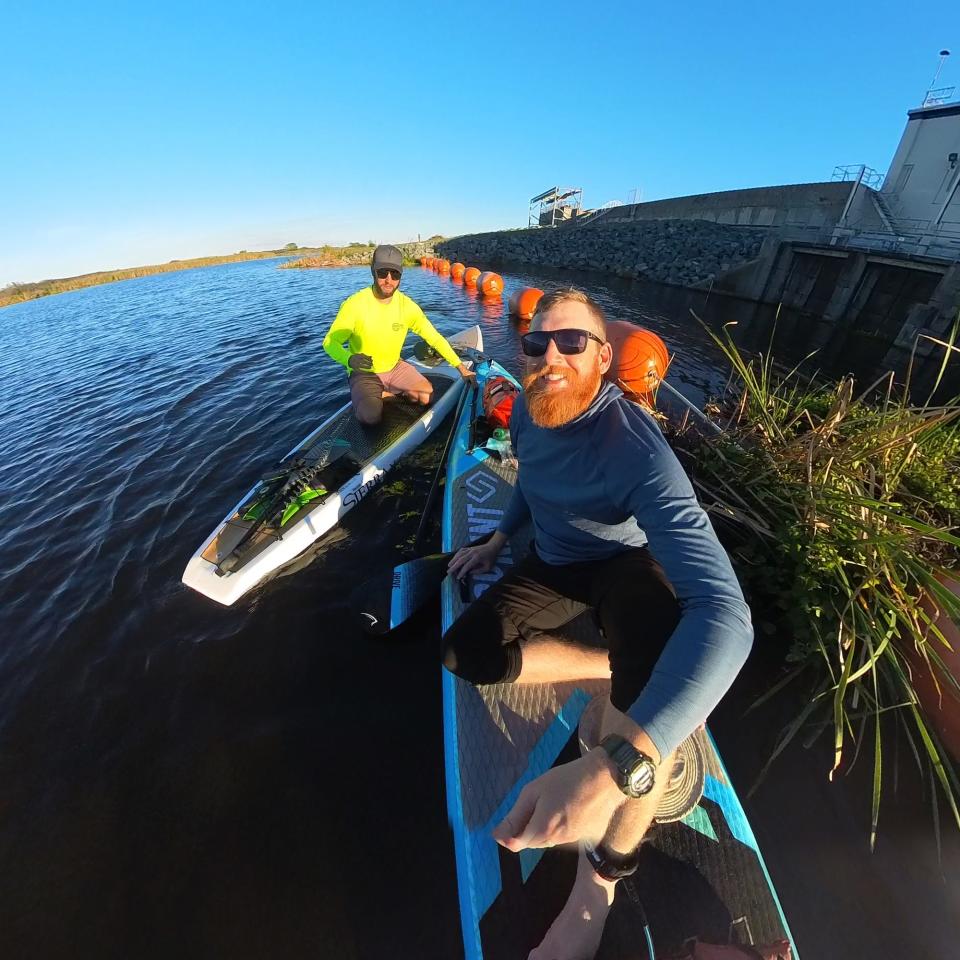
In contrast to the typical experience, Gravley and Wolfram found the winds subsiding as the day went along. In the center of the massive lake, the paddlers happened upon a weather station that extended about 20 feet above the surface.
Knowing Lake Okeechobee’s reputation as a fishing spot, Wolfram was surprised to see so few boats out of the water. He said he experienced “a serene feel of seclusion out there just in the middle of the water “
While the duo rarely glimpsed fish in the dark and murky water, they spied thousands of birds, Gravley said: ducks, cormorants, anhingas, white pelicans and various gulls and terns.
Wolfram’s longest previous paddle had been the several-hour expedition on Lake George, and he said the 11½-hour journey across Lake Okeechobee proved a bit grueling, even in much-better conditions.
“There’s definitely a physical strain; you just have to keep going,” he said. “But the worst that really happened is your toes and feet get sore from just standing and balancing. All the waves make you engage your toes a ton, which I hadn't encountered before. I was surprised by sore toes, and I did right at the end, start to cramp up in my back. And I was glad that at that point, we could finally see shore. So there was a good horizon to just aim for to finish it up.”
Hunting: Is a legal Florida bear-hunting discussion right around the corner? | Ian Nance
An ardent reader, Wolfram said he had become familiar with the Everglades and South Florida through his reading, but most of his outdoors explorations had taken place in Central and North Florida.
“And so, for me, what was so cool about this is it took all of these things I read in books and made it a reality,” he said. “I was able to see, feel and breathe those environments that were mostly areas I had just read about. And because of that, it put the finishing dot on the experience of caring about protecting Florida's waterways.”
Gravley encapsulated the experience in a written statement.
"We wanted to do something bold and adventurous to capture people's attention and underscore the significance of protecting our state," he wrote. "Paddleboarding across Lake Okeechobee was not only a personal challenge but a symbolic gesture to emphasize the interconnectedness of our natural environments and the need for their preservation."
Gary White can be reached at gary.white@theledger.com or 863-802-7518. Follow on X @garywhite13.
This article originally appeared on The Ledger: Duo with Polk County ties celebrate paddle across state's largest lake

